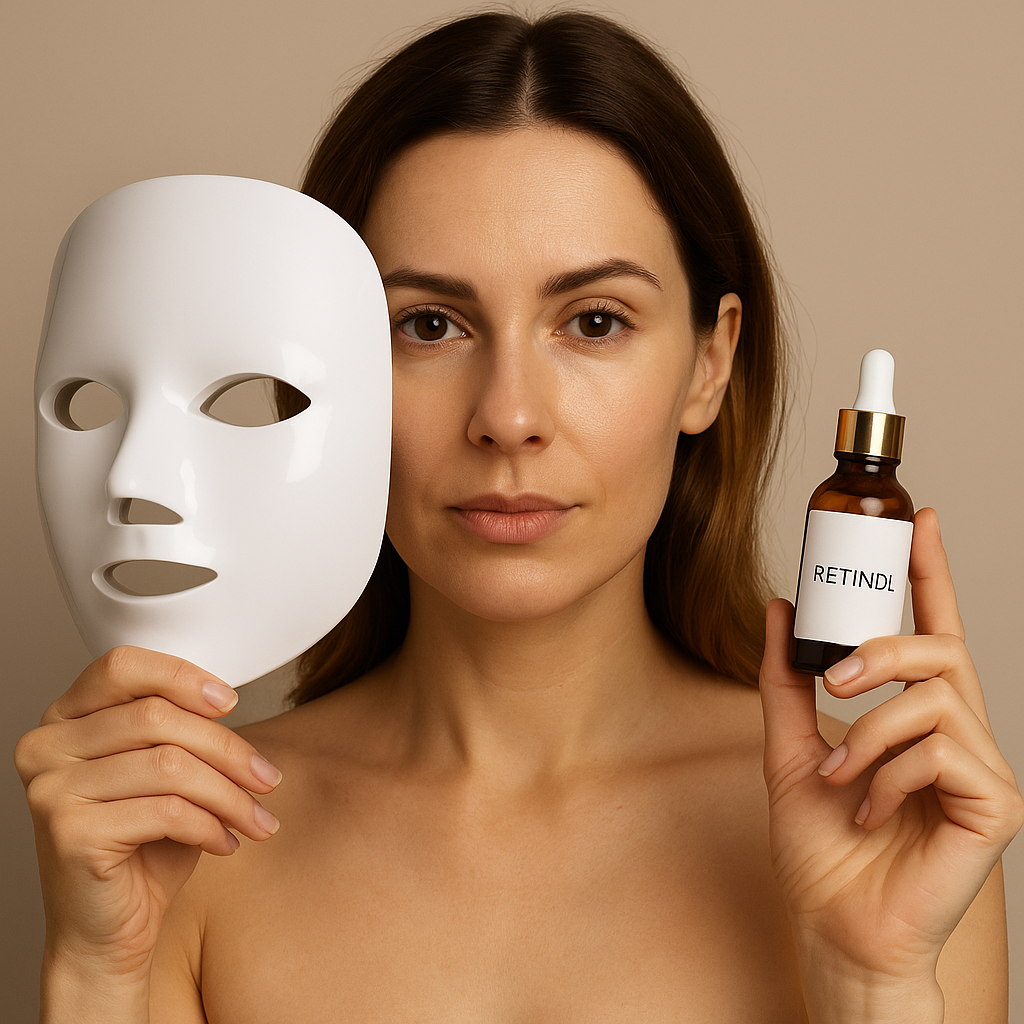Fine Lines Comparison
Compare how retinol and LED therapy target fine lines differently, and discover which approach works best for your skin type and goals.
When choosing an anti-aging routine, one of the most common questions is: should I use retinol or try LED therapy? Both can help smooth fine lines and improve skin texture, but they work in different ways. If you're exploring your options, especially after reading our main article on High‑Tech Anti‑Aging:Photobiomodulation Boosts Collagen , this guide will help clarify the pros and cons of each.
How retinol works
Retinol is a well-known form of vitamin A that increases cell turnover and boosts collagen production. Over time, this leads to smoother skin and fewer fine lines. However, retinol can be irritating — especially for beginners. Side effects may include redness, peeling, and dryness. It also increases sun sensitivity, so SPF is a must during daytime use.
Retinol products vary in strength and can be found in both over-the-counter and prescription formulas. Results are usually visible within 6 to 12 weeks with consistent use, but not everyone can tolerate it — especially those with sensitive or reactive skin.
How LED therapy works
LED therapy uses red or near-infrared light to stimulate fibroblast cells deep in the skin. These cells are responsible for producing collagen and elastin — two key components of firm, youthful skin. Unlike retinol, LED light doesn’t irritate or thin the skin. It strengthens it gradually from within.
At-home LED devices are safe, non-invasive, and ideal for regular use. You won’t get dramatic results overnight, but consistent sessions over several weeks can lead to visible improvements in skin firmness and fine lines, especially when combined with healthy habits.
Can you combine both?
Yes — but with caution. Some people alternate LED and retinol in their routines. For example, retinol one night, LED the next. This can allow you to benefit from both without overwhelming your skin. Avoid using them at the same time unless your skin is already used to both and shows no signs of sensitivity.
If you're just starting out, it’s better to begin with LED alone, then slowly introduce retinol into your routine. Always monitor your skin’s response, and adjust frequency accordingly.
Which one is better?
There’s no one-size-fits-all answer. Retinol tends to deliver faster results for surface-level texture but comes with a risk of irritation. LED is slower but safer and better tolerated. For people with sensitive or dry skin, LED might be the best place to start. For oily or acne-prone skin that tolerates actives well, retinol can be more effective in the short term.
Think of LED therapy as a long-term strategy and retinol as a strong active that needs to be managed carefully. Many dermatologists now recommend using both — at different times — for maximum results.
Conclusion
Choosing between retinol and LED therapy depends on your skin goals, your tolerance, and your lifestyle. LED therapy is gentle, safe, and supports long-term collagen production, while retinol offers faster but sometimes harsher results. With the right routine, they can even work together.
If you're building a full anti-aging protocol tailored to your age and skin needs, explore Anti‑Aging Protocols for 30s / 40s / 50+ to help structure your routine for the best results — with or without retinol.

